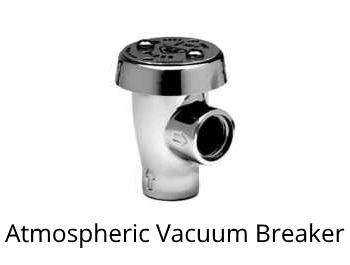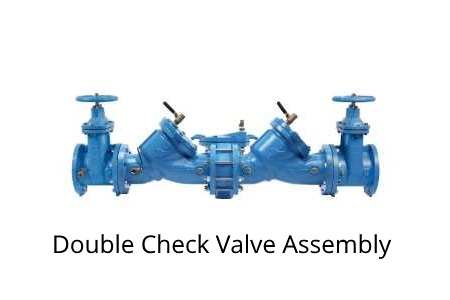Backflow Prevention Program
Did you get a notice about backflow testing?
For properties that require a backflow prevention device, the customer is responsible for annual testing. An approved plumber or tester must perform your annual certification test. Approved Plumber List
To check the status of your backflow preventer and the due date for your annual test log onto the Aqua Resource Customer portal. For instructions on using the AquaResource portal, please see our How to Use the AquaResource Portal guide.
What is Backflow?
Backflow is when contaminated water flows backward into clean drinking water lines, usually due to a change in water pressure. The reversal of water flow causes a public health hazard.
Water systems are designed for one direction of water flow. There are two ways backflow can occur:

Backsiphonage – Water can be pulled back into the water system due to loss of pressure in the system, such as a water main break, maintenance, or high-demand activities, including firefighting.
Backpressure – The pressure in the pipe connected to the water main is greater than the pressure in the main itself. This difference in pressure pushes water backward. This could be caused by pumps, piping systems elevation, or thermal expansion from a heat source.
Why Backflow Prevention?
Everyone deserves to trust the water delivered to them is safe. Since backflow causes a public health hazard, the Louisiana Department of Health and the U.S. Environmental Protection Agency mandate backflow prevention. SWBNO is obligated to ensure compliance among its customers. Backflow prevention is a shared responsibility among regulators and drinking water customers.
What are Cross Connections?
When backflow occurs, contaminates from outside of our public and private water systems can be unintentionally pulled into the water system through unprotected cross connections. Cross connections are physical connections between the drinking water system and an outside source – anything other than freshly treated, SWBNO-supplied water.
SWBNO is currently surveying all 140,000 water connections in our service area to identify and reduce cross connections. The utility is also assisting property owners with their responsibilities in order to meet the state’s requirements.
Why does the Cross-Connection Program exist?
All community water providers are mandated by the Louisiana Department of Health (LDH) to enforce a Cross Connection Control Program designed to protect public health and the public water supply.
Common Cross Connections
| Hazard | Cross Connection | Issue / Risk | Compliance Requirements |
|---|---|---|---|
| Swimming Pool | Filling pool with submerged hose | Dirty, chlorinated pool water being siphoned back into drinking water supply | Air Gap |
| Auto-fill device | Backflow Preventer Device (Reduced Pressure (RP) Principle Assembly)+ Annual Testing | ||
| Irrigation System | Sprinkler heads open to atmosphere | Mud, microbes, e-coli, etc. can get siphoned back into the potable drinking supply | Backflow Preventer Device (Pressure Vacuum Breaker (PVB))+ Annual Testing |
| Fountain | Filling with submerged hose | Dirty fountain water being siphoned back into drinking water supply | Air Gap |
| Auto-fill device | Backflow Preventer Device (Reduced Pressure (RP) Principle Assembly)+ Annual Testing | ||
| Fire Sprinkler System | Water pipes | Stagnant water from fire sprinkler re-entering drinking water supply | Backflow Preventer Device (Double Check Assembly)+ Annual Testing |
How Customers Can Prevent Backflow
Knowing how to prevent backflow is the first step in protecting yourself and your neighbors. Here are a few methods for preventing cross connections and backflow in your home.
Air Gap
The most common form of cross connections on residential properties is a submerged garden hose in non-drinkable water, like a pool. You can avoid this cross connection by filling the vessel (tub, swimming pool, ornamental fountain, etc.) through an air gap. An air gap is the physical distance between the discharge of a garden hose and the receiving vessel.

Backflow Preventers
Not all cross connections can be eliminated, especially for commercial customers. Things that provide everyday benefits – like car washes, fountain drink machines, and lawn irrigation – can cause backflow without proper protection. Backflow preventers are mechanical devices installed within a customer’s plumbing system to prevent the reversal of flow.
The type of backflow preventer required depends on the hazards and conditions encountered. Laws and regulations require at least annual testing of backflow preventers. Testing should be conducted by an individual certified to perform the work.
To check the status of your backflow preventer and the due date for your annual test log onto the Aqua Resource Customer portal
The most common backflow preventers are shown here:
Customer Responsibilities (LAC Title 51:XIV):
- If a hazard is identified the owner of the property shall coordinate with a plumber from the Approved Plumber’s list to install appropriate backflow preventer.
- It shall be the duty of the owner of the backflow assembly to ensure that their assembly gets tested at least annually by a certified Backflow Prevention Assembly Tester.
- All tests, repairs, overhauls, or replacements shall be at the expense of the owner of the backflow preventer.





Annual Testing
For properties that require a backflow prevention device, the customer is responsible for annual testing. An approved plumber or tester must perform your annual certification test.
To check the status of your backflow preventer and the due date for your annual test log onto the Aqua Resource Customer portal
FAQs
Yes, according to the International Plumbing Code (IPC 2021) and the Louisiana Administrative Code (LAC Title 51, Part XIV, section 609.F9.d Owner responsibilities), backflow assemblies must be tested on an annual basis to ensure their effectiveness.
Backflow prevention assemblies have internal seals, springs, and moving parts that are subject to fouling, wear, or fatigue. Therefore, all backflow prevention assemblies must be tested annually to ensure proper functionality to protect the public water system.
If your irrigation system is still connected to the city’s water line, you are required to have your device tested. If you would like to disconnect your system, the backflow preventer must be removed, and the line from the water supply must be capped with a waterproof plug or cap.
SWBNO requires this work be performed by a licensed plumber or professional irrigation company. They will need to provide proof in form of before and after pictures of the area where the backflow assembly was located.